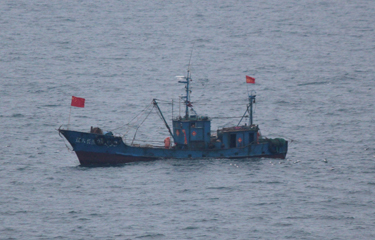China’s growing need for aquafeed has been a driver of overfishing in the East China Sea and the South China Sea, according to a new scientific report.
Rising ocean temperatures as a result of global warming will be particularly ruinous to fishing stocks in the South China Sea, according to the report, “Sink or Swim: The Future Of Fisheries In the East And South China Sea,” which was compiled by fisheries scientists and economists from the University of British Columbia as well as the University of Hong Kong with backing from the ADM Capital Foundation.
“Under a severe climate change trajectory, which indicates a two-degree Celsius warming by 2050, the South China Sea is likely to experience significant declines in key commercial fish and invertebrate species, placing many regional fishing economies at risk of devastating failure,” the report said.
The report’s authors, including Rashid Sumaila, a professor at the University of British Columbia’s Institute for the Oceans and Fisheries and its School of Public Policy and Global Affairs, said immediate action to reduce fishing effort in the East and South China Sea is necessary to reverse the collapse, pointing out that “parts of these marine areas have experienced warming 10 times the global average, whilst subject to decades of overfishing.”
“Under certain climate change scenarios, seafood species that are mainstays of the Hong Kong seafood market, such as groupers and threadfin breams, could be reduced to a fraction of their present population by the end of the century,” Sumaila said.
The researchers applied advanced ecosystem modeling techniques to project the impacts of climate change and overfishing on the region’s fish populations and economies. They found annual fisheries trade of USD 100 billion (USD 89 billion) from the seas is at stake, with commercially important species like chub mackerel or large yellow croaker – already classified as overexploited – especially impacted.
The catch of juvenile fish in the country’s territorial waters has risen, with the majority of the catch sold to China’s fishmeal producers, despite a recent clampdown by Chinese authorities. That practice has resulted in shrinking domestic seafood supply, which in turn has been a driver of China’s expansion of its distant-water fleet.
Photo courtesy of Zhao Zheming/Shutterstock







